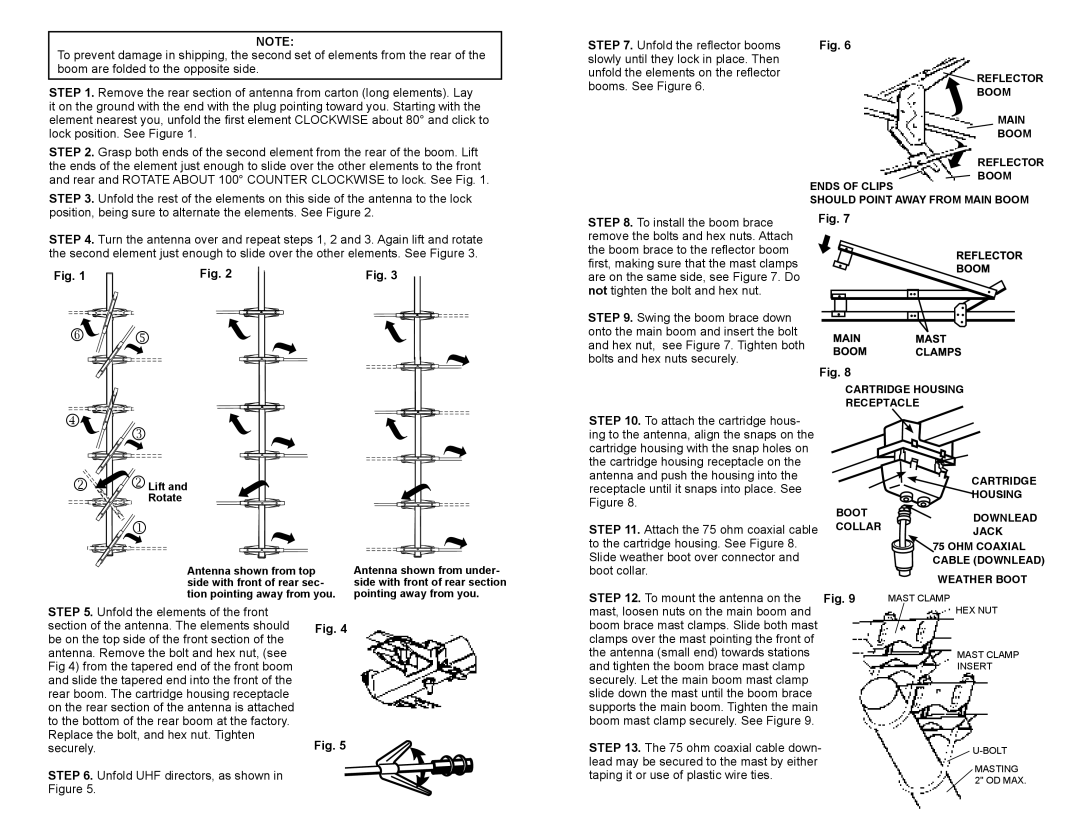HD7084P, HD7697P specifications
The Winegard HD7697P and HD7084P are two highly regarded outdoor HD antennas designed for digital television reception. These antennas are popular among cord-cutters looking to access free over-the-air (OTA) broadcast signals. Both models offer unique features, technologies, and characteristics that cater to different reception needs.The Winegard HD7697P is an advanced outdoor antenna that amplifies signal capture and offers a range of up to 70 miles. It is engineered with a robust design that can withstand harsh weather conditions, making it suitable for various regional climates. One significant feature of the HD7697P is its patented OneLink technology, which allows for a seamless connection with multiple televisions without the need for an additional splitter. This antenna also includes a heavy-duty mounting bracket, ensuring stability and reliability when installed on rooftops or poles.
Equipped with a multi-directional reception pattern, the HD7697P can easily pick up signals from multiple broadcast towers without necessitating a complex installation process. The antenna’s sleek, low-profile design not only enhances aesthetics but also helps reduce wind resistance, further improving its durability. The embedded 4G LTE filter minimizes interference from mobile signals, ensuring a clearer reception with fewer interruptions.
On the other hand, the Winegard HD7084P is tailored for urban and suburban settings where signals are generally stronger. This antenna boasts a range of up to 50 miles and shares many technological features with the HD7697P. It adopts a compact design that provides easier installation while still delivering exceptional performance. The HD7084P is built with a lightweight structure without compromising on signal reception quality.
Like the HD7697P, the HD7084P is equipped with multi-directional capabilities, allowing users to receive signals from various directions. Its robust construction makes it resistant to weather-related damage, making it a practical choice for outdoor use. The antenna also includes a 4G LTE filter to enhance picture quality by reducing interference.
In summary, both the Winegard HD7697P and HD7084P offer excellent options for consumers seeking reliable HD antenna solutions. With modern technologies such as multi-directional reception and advanced filtering, these antennas are designed to ensure optimal performance, providing users with access to local channels and high-definition programming without the costs associated with cable services.

